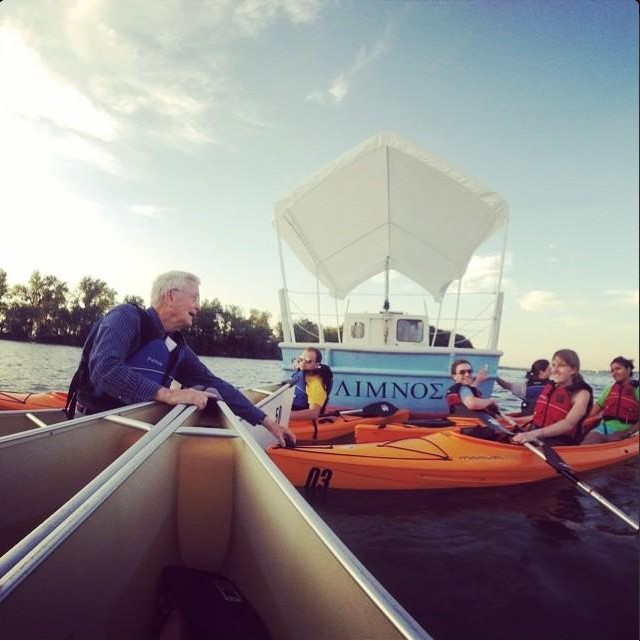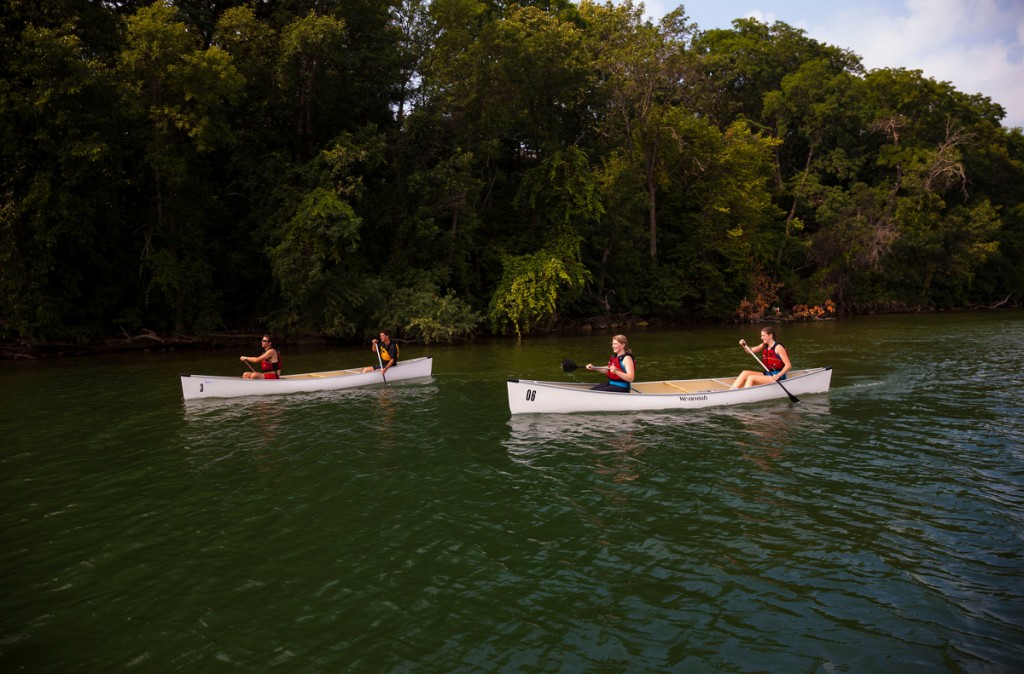Get to Know a ‘Paddling’ Professor

Emeritus professor of Limnology John Magnuson during his Paddle with a Professor lecture. John spoke about Lake Mendota’s changing fish communities.
There’s plenty of summer left, with tons of events and activities around the Union to take full advantage of before the cool autumn winds set in. Wondering what’s currently on our summer radar? Walk on down to Outdoor UW and take advantage of the weekly Paddle with a Professor events, featuring UW-Madison professors lecturing on the lake, with topics ranging from climate change effects on Lake Mendota to local Indian burial grounds. Haven’t got your sea legs? No problem–we had the pleasure of speaking with professor of Anthropology Sissel Schroeder to find out a little more about her and her upcoming lecture “Exploring Prehistoric & Historic Landscapes Surrounding Lake Mendota,” which will take place August 13.
TV: What is your favorite aspect of studying anthropology?
SS: That’s a tough question because there are so many things I enjoy about what I do. Archaeology has always been attractive to me because it is so challenging. We want to understand complex things about food, religion, politics, economics, social relations, kinship relations and so on, but we find such a small fraction of the material residues of peoples’ lives in the past that it is really difficult to come up with strong interpretations—gathering more evidence helps with this. Collecting new data and then trying to make sense of it provides a never-ending source for the excitement of feeling like you’ve made a discovery, or you are touching something that was last held in someone’s hands 10,000 years ago.
TV: You teach several classes at UW-Madison—which course is your favorite to teach and why?
SS: I love teaching each of my classes. What makes a class fun for me is the students—Badger students get so engaged with their studies, ask interesting questions and are naturally curious. They are just so amazing!
TV: What is your favorite Babcock ice cream flavor?
SS: Orange-Chocolate Chip is my go-to flavor. I especially enjoy getting a cone in the winter… the ice cream doesn’t melt!
TV: We listened to your University of the Air spot to learn more about Wisconsin’s history—while we’re eating our Babcock, what were the diets of Wisconsin’s earliest inhabitants like?
SS: The earliest peoples came to Wisconsin about 12,000 years ago. We have evidence of the different kinds of big game that they ate (mammoth, mastodon, elk, deer), but bones from smaller animals and fish, and plant remains, don’t preserve well over that span of time so we don’t know a lot about other foods that the earliest people ate. We find tools that date back about 10,000 years that were used to process plant foods (grinding stones) so we know they were eating plants, we just don’t have a good handle on the kinds.
TV: Your Paddle with a Professor event is titled “Exploring Prehistoric & Historic Landscapes Surrounding Lake Mendota.” If we were standing on the Terrace and went back in time 10,000 years ago, what would the land, animals and people look like?
SS: The level of water in the lake would be higher, so Picnic Point would probably have been an island. By 10,000 years ago, the tundra vegetation that would have immediately followed the retreat of the glaciers was replaced by spruce and fir, which were probably the dominant plants, along with pine and oak. Deer, bear, elk and other mammals would have roamed through the land, and the lake would have had an abundance of fish and other aquatic animals. People likely lived around the margins of the lake, perhaps focusing their settlements around locations where streams flowed into or out of Lake Mendota. For the most part, people lived in small groups composed of family members, but at some times of the year, these small groups would aggregate together to share stories, conduct rituals, exchange tools and so on. They lived in temporary shelters, probably made from animal skin draped over a framework made of saplings.
Interested in hearing more from Sissel in person? Her lecture on the lake will be the last Paddle with a Professor event this summer, and you can sign up by contacting Outdoor UW, information found here.

